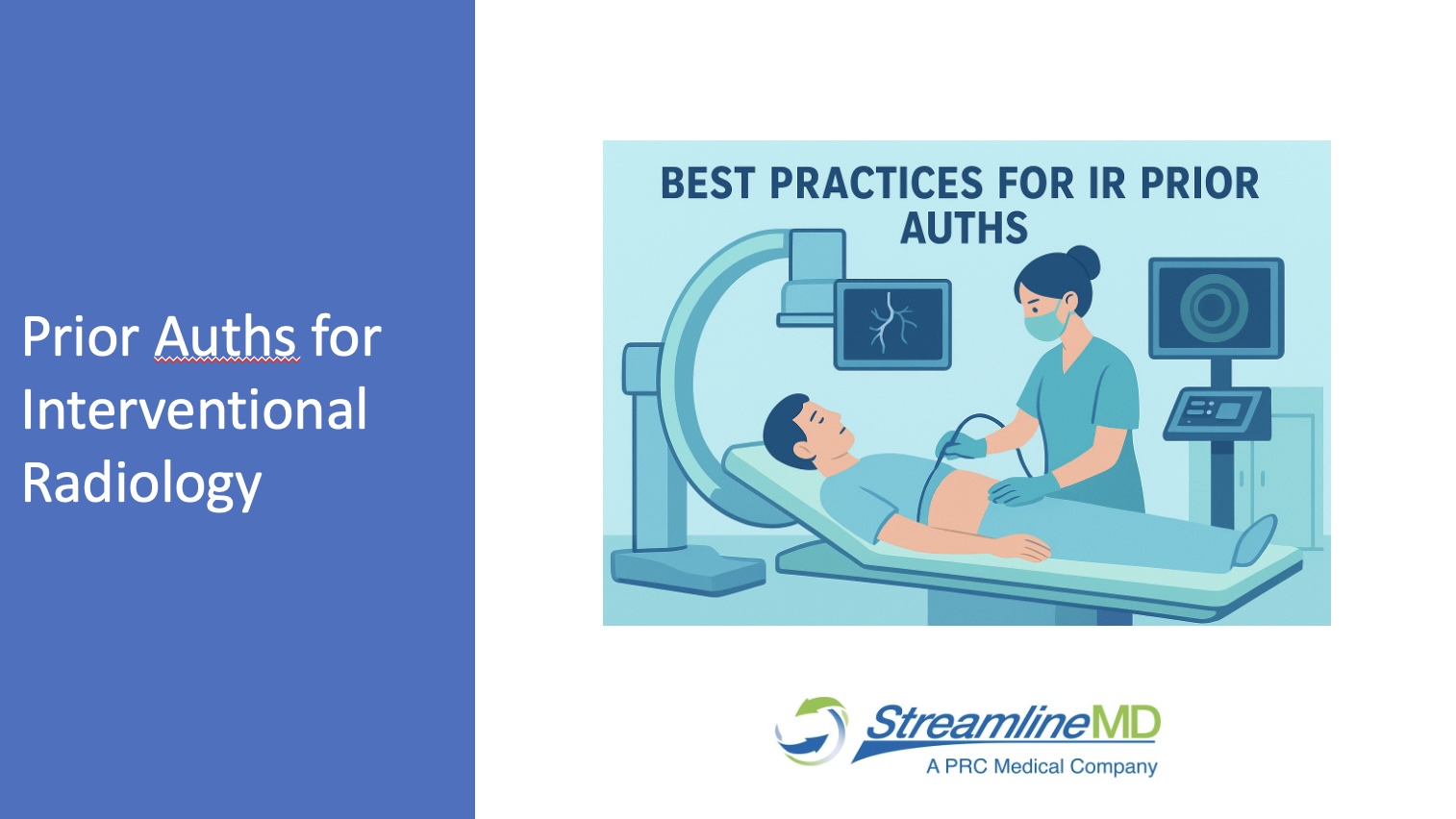Note: This article was originally published in the RBMA Bulletin March/April 2019 edition, titled, “There’s Gold in Them Thar IR’s”.
The landscape of the radiology specialty is evolving rapidly with the advent of changes in how physicians are paid, increasing competition, and rapid consolidation. One critical area of opportunity in the radiology industry is within Interventional Radiology (IR). Advancements in clinical technology and expansion in payer policy have paved the way for IR cases to be performed safely and profitably in office environments. If executed and managed successfully, these office-based IR cases can be quite lucrative and profitable and become a material component of a radiology practice’s bottom line. Regardless of a radiology group’s strategic interests to remain independent or to partner/sell to a consolidator, taking advantage of the potential value within their IR’s will yield benefits. Hence the play on Mark Twain’s famous words, “There’s gold in them thar hills.”
An Imperfect Alliance
Diagnostic Radiology (DR) is a major component of hospital care volume. Accordingly, traditional hospital-based radiology groups have historically been led and dominated by DRs. However, hospitals typically require radiology groups to offer interventional radiology coverage as part of their service agreement. It’s not unusual for IR coverage requirements to result in excess IR physician capacity. Groups tend to attempt to fill this capacity by requiring IR’s to read diagnostic studies. Inevitably, this causes feelings of inequity, decrease in morale, group culture degradation, and conflict.
Additionally, it is very challenging for traditional hospital-based radiology groups to generate any meaningful profit, or Earnings Before Interest, Taxes, Depreciation and Amortization (EBITDA). Market driven radiology compensation levels often equate to essentially what a radiologist can produce in annual revenue, leaving nothing for profit. As such it’s common for groups to seek some level of compensation or financial support from their hospital clients in order to cover practice overhead. This can be a problem in today’s evolving radiology landscape as lack of profitability weakens a practice and market value is dependent upon EBITDA.
The Radiology Market is Evolving Quickly
As is prone to happen in a free capitalist society, the industry is innovating and the market is advancing and adapting to these factors. In short, IR entrepreneurialism is flourishing. Two major trends include: IRs separating from DR groups, becoming independent, and negotiating hospital coverage agreements separately; and the creation of free-standing IR clinics, frequently referred to as minimally invasive surgery centers, interventional centers, outpatient endovascular suites, and office-based labs. For the purpose of this article, we will use the term IR Suites.
IR’s separating from DR groups are differentiating themselves by bringing more advanced and complex IR procedures, historically performed in academic or large, urban hospitals, to community and regional hospital environments. This is attractive for the hospitals as it generates new IR case technical revenue and also increased DR volume, both of which are lucrative for the hospital. It is then conceivable for the IR group to negotiate a share of this newly found and generated technical revenue.
Alternatively, IR’s separating from diagnostic groups are “hanging shingles” and launching office-based IR Suite strategies. In recent years, IR technology has improved such that many complex procedures can now be performed in medical office places of service (POS 11) rather than traditional hospital outpatient place of service (POS 22). This interest in IR Suite strategies is growing rapidly and led to the creation in 2013 of a new industry society, the Outpatient Endovascular & Interventional Society (OEIS) to support its needs. To learn more, see https://oeisociety.com/.
As with any business venture, this IR Suite strategy has its rewards and risks.
Rewards: IR Suite benefits to the IR, patients and payers can be substantial. IR practitioners can gain the ultimate freedom and control over their clinical decision making, business success and destiny. IRs benefit from global fee revenue, which is many multiple times greater than professional fees. For example, for a Lower Extremity Revascularization Case including CPTs 37227, 37229, 99152, and 99153, the CMS national average allowed for the Outpatient Hospital (POS 22) fee for the hospital is $15,355, and the Professional Fee for the provider is $1,146. Patients tend to prefer the convenience of the office experience over the hospital to avoid dealing with parking decks, parking fees, and navigating the hospital labyrinth.
Moreover, payors respond positively to this shift as the overall cost of treating the patient in IR Suite/Office (POS 11) tends to be far less than hospital outpatient (POS 22). Consider dialysis circuit interventions, blockages often develop resulting in stenosis, occlusion and failure and patients are in often for these interventions. The cost of treating a patient in a hospital is significantly higher than in an IR Suite. For example, when CPT 36906 thrombectomy and stenting in the peripheral segment is performed, it will cost the payers over $9,000.00 more if the procedure is done in a hospital (POS 22) rather than an IR Suite (POS 11).
Finally, patients can have greater access to the latest minimally-invasive image-guided procedure techniques to treat illness without having to deal with the unpleasant experience of hospital procedures that require parking decks/fees, a labyrinth of hallways and corridors, and the risk of infection, not to mention the costs.
Risks: Conversely, the IR will experience new challenges and substantial expenses. The entrepreneurial IR will be in business for themselves. This means running a “startup-up” business, including developing a sound strategy and business plan, completing market analysis, considering marketing strategies, developing a financial forecast, and acquiring necessary seed capital. In this process one must take into consideration the necessary legal, accounting and insurance resources and expenses. Moreover, an office practice overhead includes greater amounts of staff and equipment than hospital-based radiologists are accustomed to supporting.
Additional challenges, and sources of expense, include:
- Running an office-based practice for the first time. In the hospital, radiologists benefit from hospital-employed resources handing the administrative load of marketing, patient scheduling, non-physician staffing, etc. In the office, the entrepreneurial IR needs to take over these responsibilities.
- Office-based technology requirements. Again, in the hospital, radiologists benefit from hospital technology infrastructure. In the office, the IR needs to address IT infrastructure including sourcing substantial Internet bandwidth access, internal networking, office computing equipment, phone systems, Scheduling, EHR/PM software, and clinical imaging equipment.
- According to Phil Pease, founder of ENDEVIR, an endovascular and interventional center development and management company, “Anti-Kickback Statute (AKS) and Civil Monetary Penalties (CMP) Law can also impact office-based services and can trigger substantial financial penalties. Consult with a healthcare attorney on these matters and document all exceptions and compliance requirements.”
Despite these material challenges, expenses and risks, a well-executed plan can lead to substantial return on investment (ROI) and this is compelling physicians in increasing numbers to embark on this journey. According to Jeffrey Carr, MD, in January 2014 there were 350 to 400 IR Suites/OBL’s in the US. According to the OEIS website on January 14, 2019, the market contains approximately 700, and continues to grow rapidly.
Don’t Get Left Behind
With the emergence of these independent IR strategies, the IR’s increase their ROI, prosperity, and lifestyle, dramatically, and DR’s are left with their stagnating diagnostic practices. So, it may be prudent for radiology groups to strongly consider being proactive in taking advantage of this IR opportunity.
Examples of IR Suite Strategies for Traditional Hospital-Based Radiology Groups:
As in any business venture, marketing strategy is essential. In addition to marketing to potential referral sources and education the physician community on the benefits of IR therapies, don’t forget to market directly to consumers with patient education seminars and multimedia advertising campaigns. Examples of marketing and brand building strategies include:
- Branding around women’s health by integrating interventional vein therapies and uterine fibroid embolizations with women’s diagnostic mammography services.
- Branding around peripheral artery disease treatment, wound care and limb salvage services.
- Branding around cancer care with tumor ablation, Y-90, and interventional pain management services.
Political Conflict Avoidance:
- To avoid potential disruption to hospital relationship, consider allowing them to partner in the project. Doing so may allow the project to benefit from the hospital’s superior insurance contracts and may help to prevent the possibility of being unseated from the hospital coverage contract by a competitor.
- To avoid potential political conflict with the vascular and/or cardiac surgeons in the community, consider allowing them to partner in the project. Doing so will also bring potentially valuable referrals and disease specialization into the venture.
Overall Benefits:
- Improve practice camaraderie and culture
- Differentiate from encroaching competition
- Boost practice EBITDA and enterprise value
Conclusion
Now is the time to develop your strategy for the future, and it makes sense to consider this IR opportunity in the process, so you don’t miss this potential modern-day gold rush. Be sure to include the IR practitioners in the discussions and analysis to ensure both parties mutually benefit, and overall practice harmony is either maintained or restored.
References
Jeffrey Carr, MD. (January 2014) The Outpatient Endovascular and Interventional Society. Endovascular Today; https://oeisociety.com/wp-content/uploads/2018/01/et0114_F3_Carr.pdf
The Outpatient Endovascular and Interventional Society. https://oeisociety.com/ (accessed January 14, 2019).
Donald Cross, MD; Alberto Gonzalez, MD; and Kenneth Wright, MD. (March 2014) Office-Based Lab Models: Getting Started. Endovascular Today; https://evtoday.com/2017/03/office-based-lab-models-getting-started/
Kathy Hardy. (July 2014) Pursuing PAD – How Interventional Radiologists Treat Peripheral Arterial Disease. Radiology Today Magazine; https://www.radiologytoday.net/archive/rt0714p20.shtml
Athar Ansari, MD. (November 24, 2017) Office-Based Cath Labs May be a New Model for Treating Peripheral Artery Disease. Diagnostic and Interventional Cardiology; https://www.dicardiology.com/article/office-based-cath-labs-may-be-new-model-treating-peripheral-artery-disease
Phil Pease, Founder & CEO, Endevir Healthcare Management, LLC. https://endevir.com/ (interviewed January 25, 2019).
Written By: Harry G. Curley, MBA, March 2019
CEO of PRC Medical, LLC, and its subsidiary StreamlineMD, a leading provider of electronic health record / practice management software and medical coding and billing services to imaging and image-guided procedure specialists across the US. Harry has been an Radiology Business Management Association (RBMA) member for 19 years and can be reached at hcurley@streamlinemd.com.



